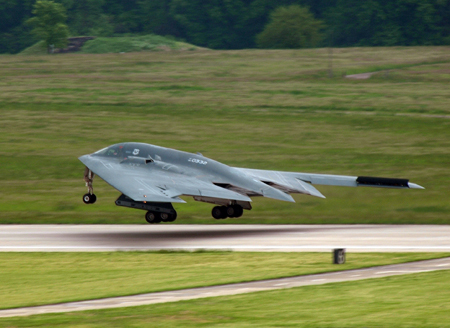If fiscal  pressures should lead to a debate on the relative value of the legs of the nuclear triad compared to other military weapons systems, Maj. Gen. William Chambers said he’d want those discussions to occur “from a strategic perspective,” with recognition that the deterrent force represents “national weapons” warranting special consideration. “The nuclear deterrent force underpins and underwrites every other tool of statecraft, every other military capability,” said Chambers, who oversees nuclear issues on the Air Staff, in a recent interview. He added, “The reason we can keep small regional, low-intensity conflicts under control is because we have this underwriting of protection against major power conflict that is produced by deterrent forces.” Chambers noted that it costs the Air Force only about one percent of its budget (some $1.1 billion of a $119 billion budget in Fiscal 2011) to operate the Minuteman III ICBM force and some two percent ($2.5 billion in Fiscal 2011) to operate its B-2A and B-52H dual-role, nuclear-capable bombers. (For more from Chambers’ interview, read No Fundamental Change and Getting to 2030.)
pressures should lead to a debate on the relative value of the legs of the nuclear triad compared to other military weapons systems, Maj. Gen. William Chambers said he’d want those discussions to occur “from a strategic perspective,” with recognition that the deterrent force represents “national weapons” warranting special consideration. “The nuclear deterrent force underpins and underwrites every other tool of statecraft, every other military capability,” said Chambers, who oversees nuclear issues on the Air Staff, in a recent interview. He added, “The reason we can keep small regional, low-intensity conflicts under control is because we have this underwriting of protection against major power conflict that is produced by deterrent forces.” Chambers noted that it costs the Air Force only about one percent of its budget (some $1.1 billion of a $119 billion budget in Fiscal 2011) to operate the Minuteman III ICBM force and some two percent ($2.5 billion in Fiscal 2011) to operate its B-2A and B-52H dual-role, nuclear-capable bombers. (For more from Chambers’ interview, read No Fundamental Change and Getting to 2030.)
The 301st Fighter Wing in Fort Worth, Texas, became the first standalone Reserve unit in the Air Force to get its own F-35s, welcoming the first fighter Nov. 5.